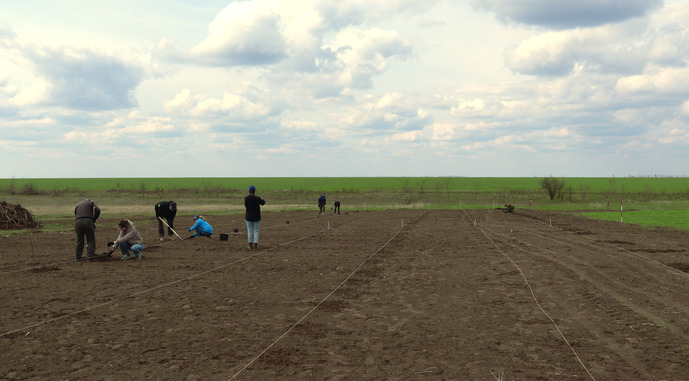WWF-Ukraine and The HALO Trust, in cooperation with the Snihurivka community in Mykolaiv region, have restored a forest belt damaged by combat operations. The initiative is part of the pilot project “Shelterbelts: Restoration and Resilience,” launched in 2024 to promote the ecological sustainability of demining activities in Ukraine.
Taking into account the region’s characteristics, experts selected suitable plant species. The shelterbelt is expected to become a resilient green barrier protecting farmlands from dust storms and dry winds, while improving crop yields and serving as an ecological corridor for wildlife.
“Although this pilot project is an important step, legal mechanisms for restoring ecosystems affected by war still need to be developed,” said Hanna Lobchenko, forest project manager at WWF-Ukraine and associate professor at NUBiP of Ukraine. Shelterbelts are a modern agroforestry practice, but they remain legally underprotected.
Mykolaiv is among the regions most in need of shelterbelt restoration. Over 80% of the region is farmland, with a critical cultivation level reaching 85%—far above the EU average of 25%. Military action and occupation have worsened the situation: recent research shows that shelterbelts near the front have lost 57% of their effectiveness, significantly reducing the region’s agricultural capacity.
“Almost every second demined area in Mykolaiv contains remnants of shelterbelts damaged by war and fires,” explained Serhii Shcherbak, environmental expert at The HALO Trust Ukraine. “This joint initiative aims to raise legislative awareness and develop funding mechanisms for such efforts.”
The project began in fall 2024 with a site assessment near the village of Tamarine. Experts collected soil samples and began drafting a restoration plan under the guidance of forestry expert Oleksandr Sovakov. The shelterbelt will serve as a scientific object for ongoing monitoring.
Recently, over 1,000 oak acorns and 100 fruit trees were planted in the area. Local residents collected the acorns and contributed seedlings. Fruit trees will protect young oaks and attract birds and pollinators, helping to establish a long-lasting, biologically diverse grove. However, long-term care is required, including weeding, mowing, and watering. Risks such as ploughing or fire remain.
“Shelterbelts offer an ecologically smart alternative to large-scale afforestation in the steppe zones of Mykolaiv, where forest ecosystems are rare,” said Maryna Romanenko of the Mykolaiv Regional Military Administration.
The planting effort was supported by the Snihurivka City Council and funded by the Ministry of Foreign Affairs of Luxembourg.
In April 2025, WWF-Ukraine and The HALO Trust will host a workshop titled “Restoring Shelterbelts after Hostilities: Joint Solutions for Communities.” The event aims to launch a national dialogue on using protective vegetation as a tool for ensuring Ukraine’s environmental and agricultural resilience amid climate change and the consequences of war.





















